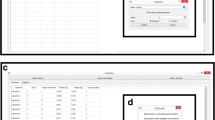Abstract
Young-adult rats and old rats perform equally well in simple mazes. In our study, young-adult female Wistar rats learned a complex 14-unit multiple “T” maze to an average of 1 error per trial (on the last trial) when given 1 trial per day for 20 consecutive days. Female rats, over 25 months of age, on the same learning schedule, scored an average of 6 errors on the last trial. However, on close inspection of the data, it was noted that approximately half of the senile rats learned the maze as well as did the young-adult rats. On the basis of this complex maze learning, senile rats differentiated themselves into a maze-bright old catagory (error and time scores like the young-adult group) and a maze-dull old catagory.
Similar content being viewed by others
References
Stone, C.: The age factor in animal learning: rats in the problem box and the maze. Genetic Psychology Monographs 5: 1–130, 1929.
Birren, J. E.: Age differences in learning a two-choice water maze by rats. J. Gerontol. 17: 207–213, 1962.
Botwinick, J., Vogt, J., and Khartchko, X.: Learning a position discrimination and position reversals by Sprague-Dawley rats of different ages. J. Gerontol. 17: 315–319. 1963.
Dye, C. J.: Effects of interruption of initial learning upon retention in young, mature, and old rats. J. Gerontol. 24: 12–17, 1969.
Verzar-McDougall, E.: Studies in learning and memory in aging rats. Gerontologia 1: 65–85, 1957.
Goodrick, C. L.: Learning, retention, and extinction of a complex maze habit for mature-young and senescent Wistar albino rats. J. Gerontol. 23: 298–304, 1968.
Goodrick, C. L.: Learning by mature-young and aged Wistar albino rats as a function of test complexity. J. Gerontol. 27: 353–357, 1972.
Goodrick, C.L.: Error goal-gradients of mature-young and aged rats during training in a 14-unit spatial maze. Psychol. Reports 32: 357–362, 1973.
Friedman, D.: Interrelations of two types of immediate memory in the aged. J Psychol. 87: 177–183, 1974.
Arenberg, D.: A longitudinal study of problem solving in adults. J. Gerontol. 29: 650–659, 1974.
Author information
Authors and Affiliations
About this article
Cite this article
Michel, M.E., Klein, A.W. Performance differences in a complex maze between young and aged rats. AGE 1, 13–16 (1978). https://doi.org/10.1007/BF02432021
Issue Date:
DOI: https://doi.org/10.1007/BF02432021



